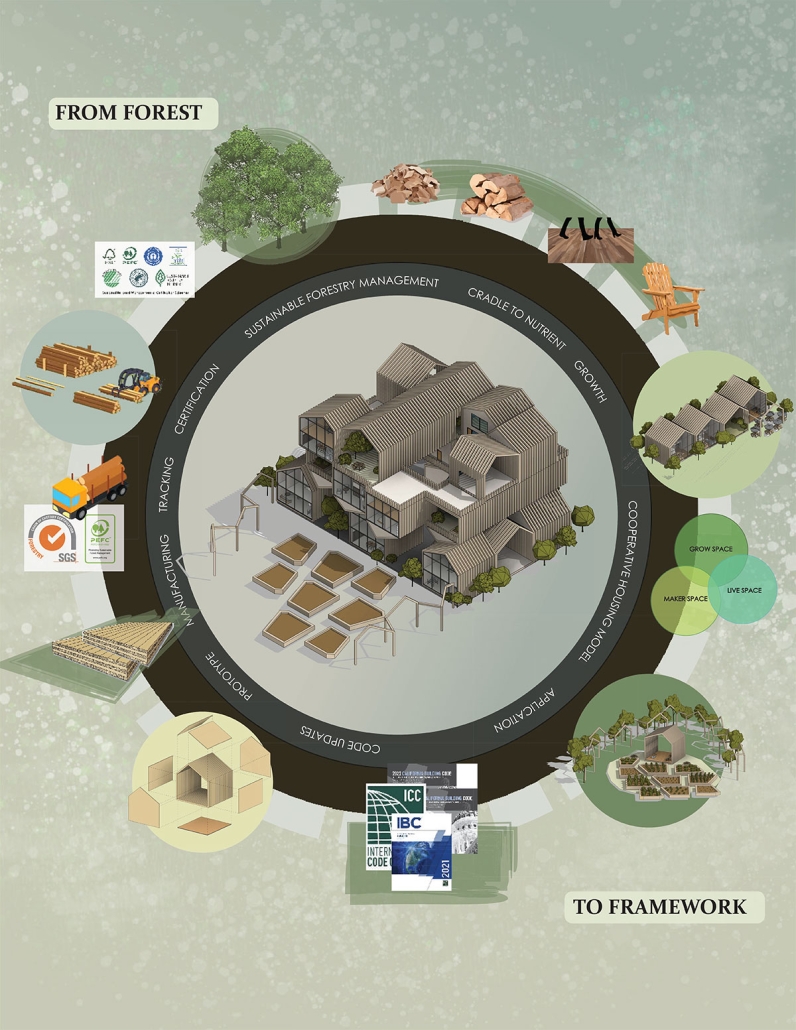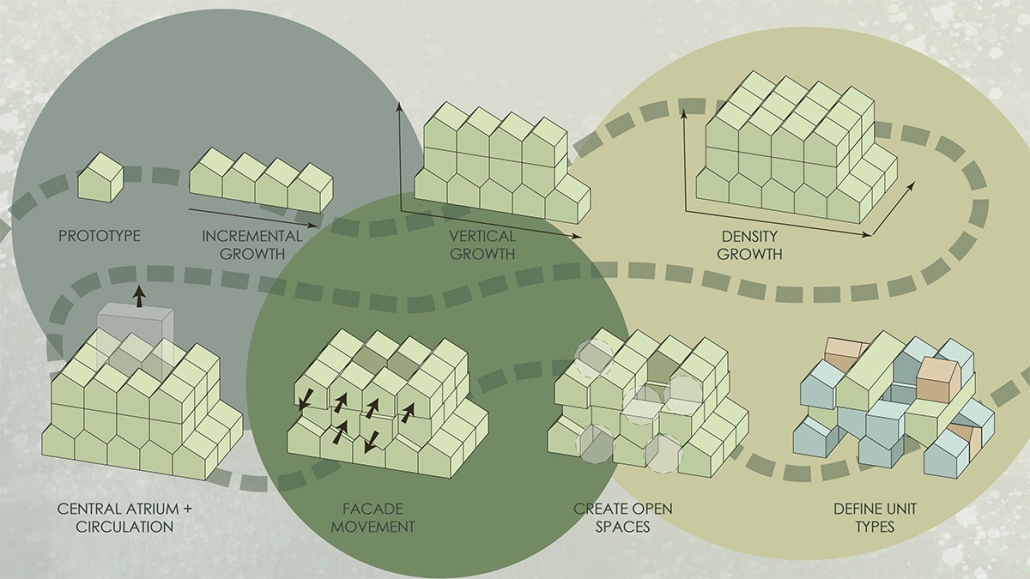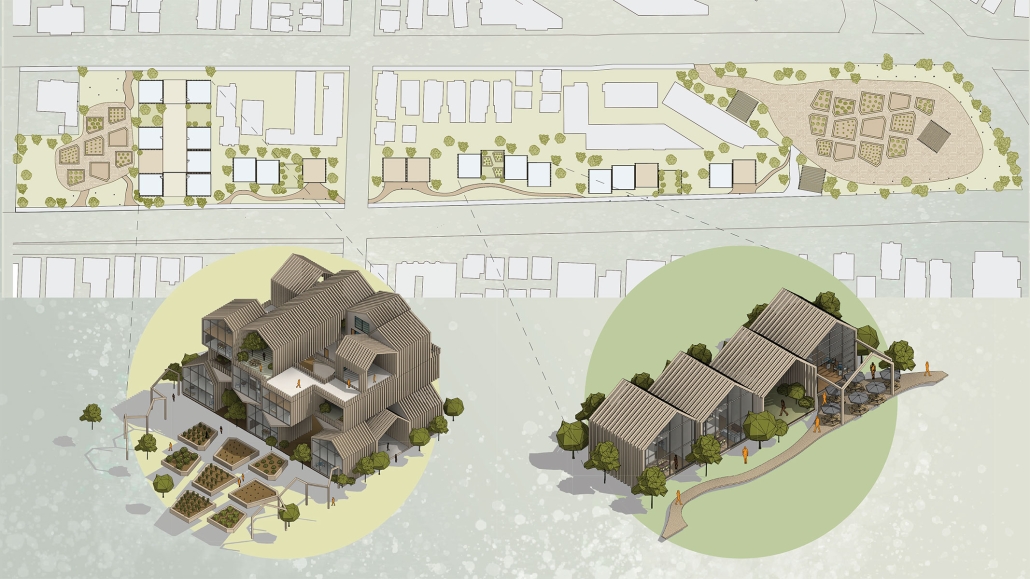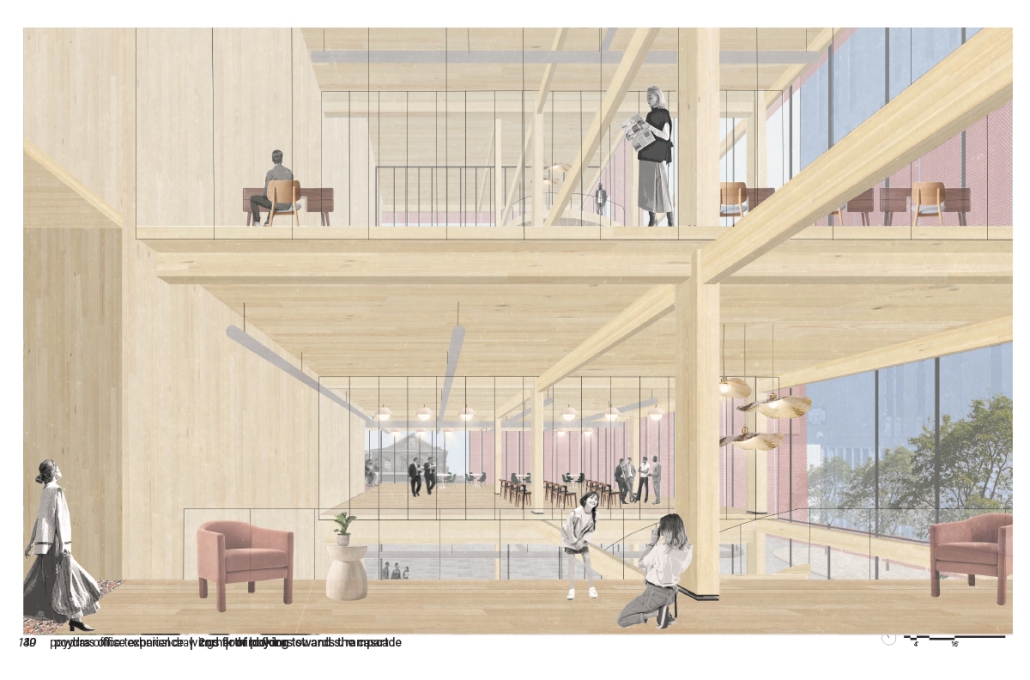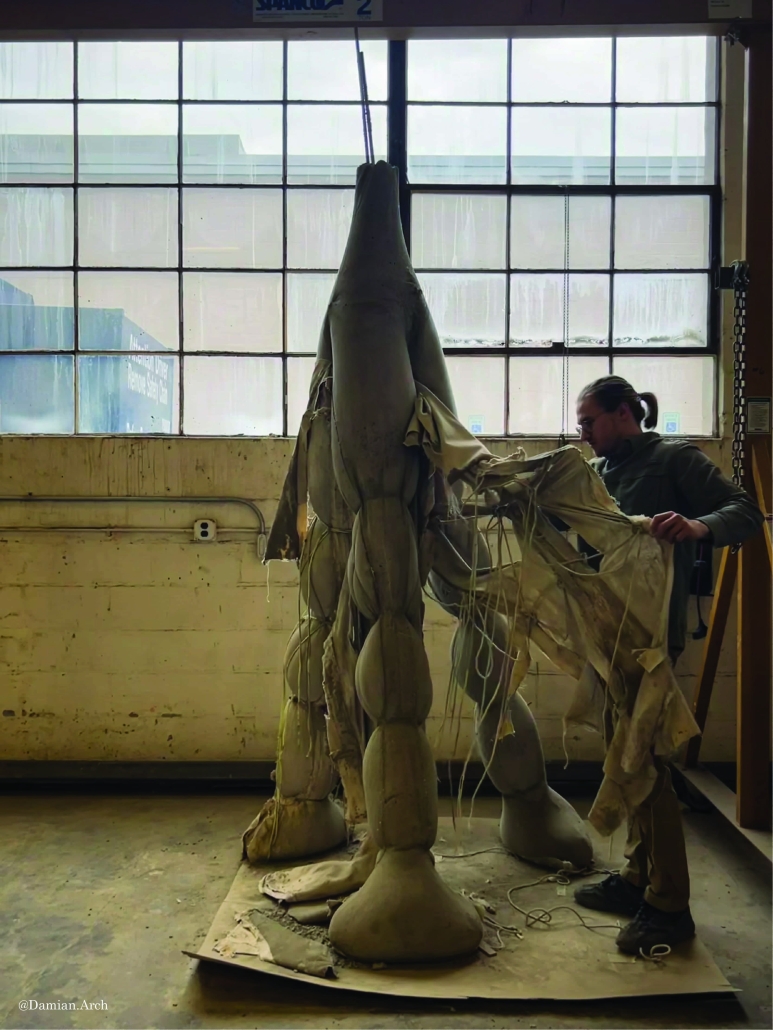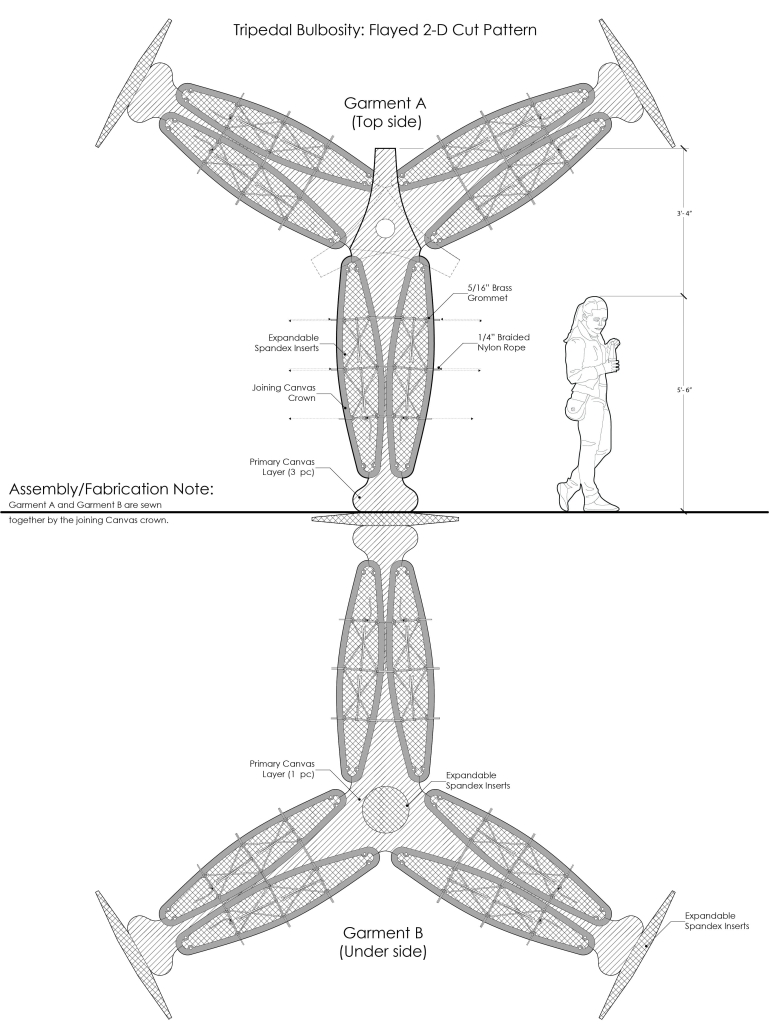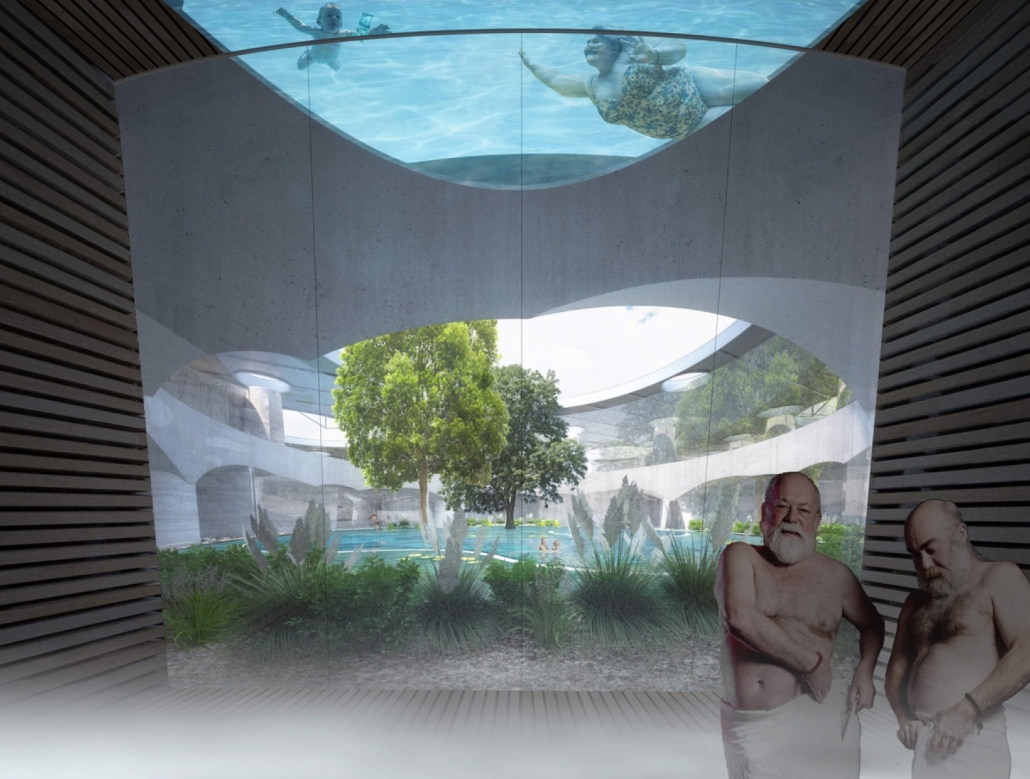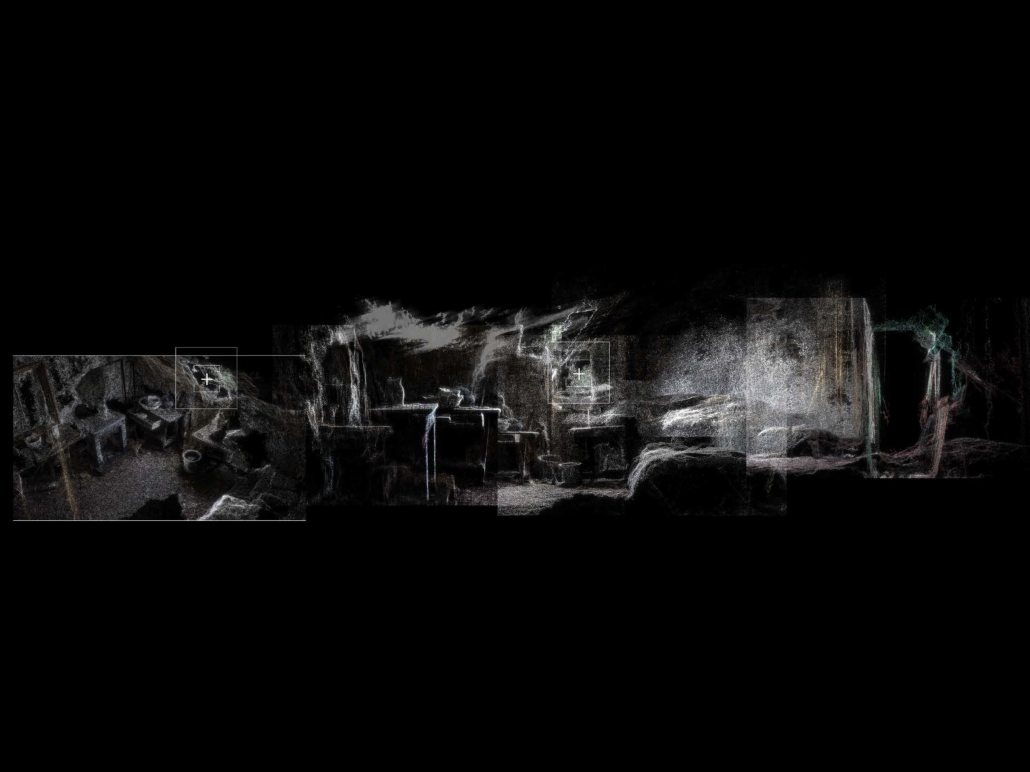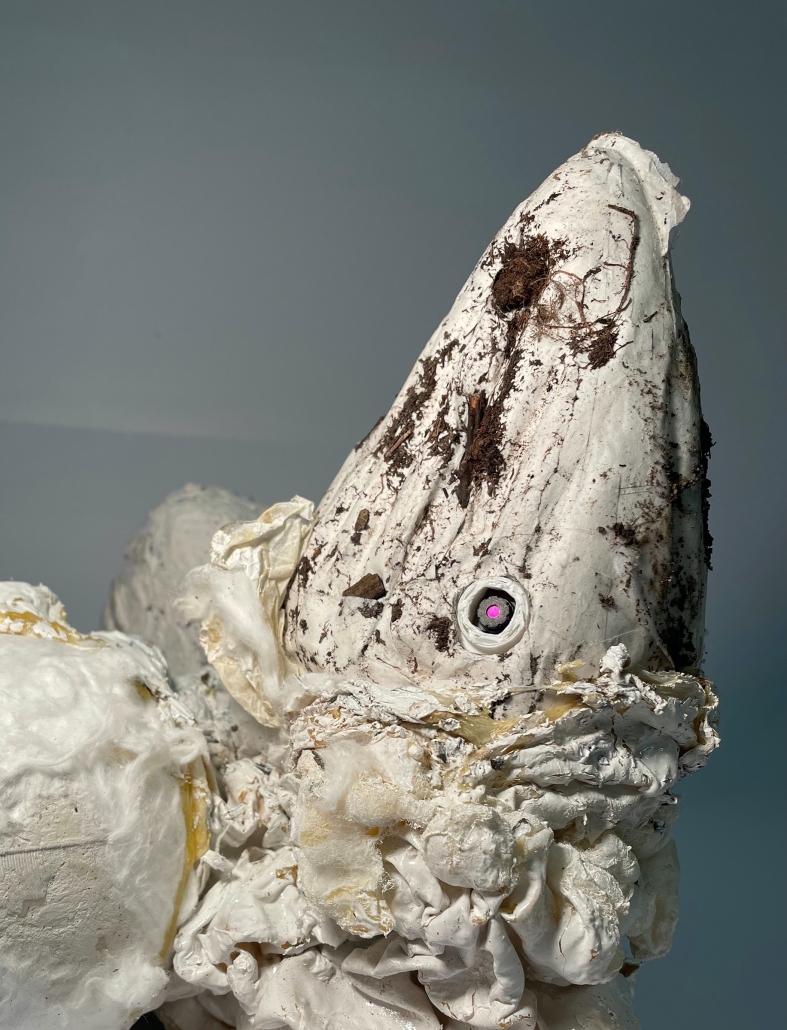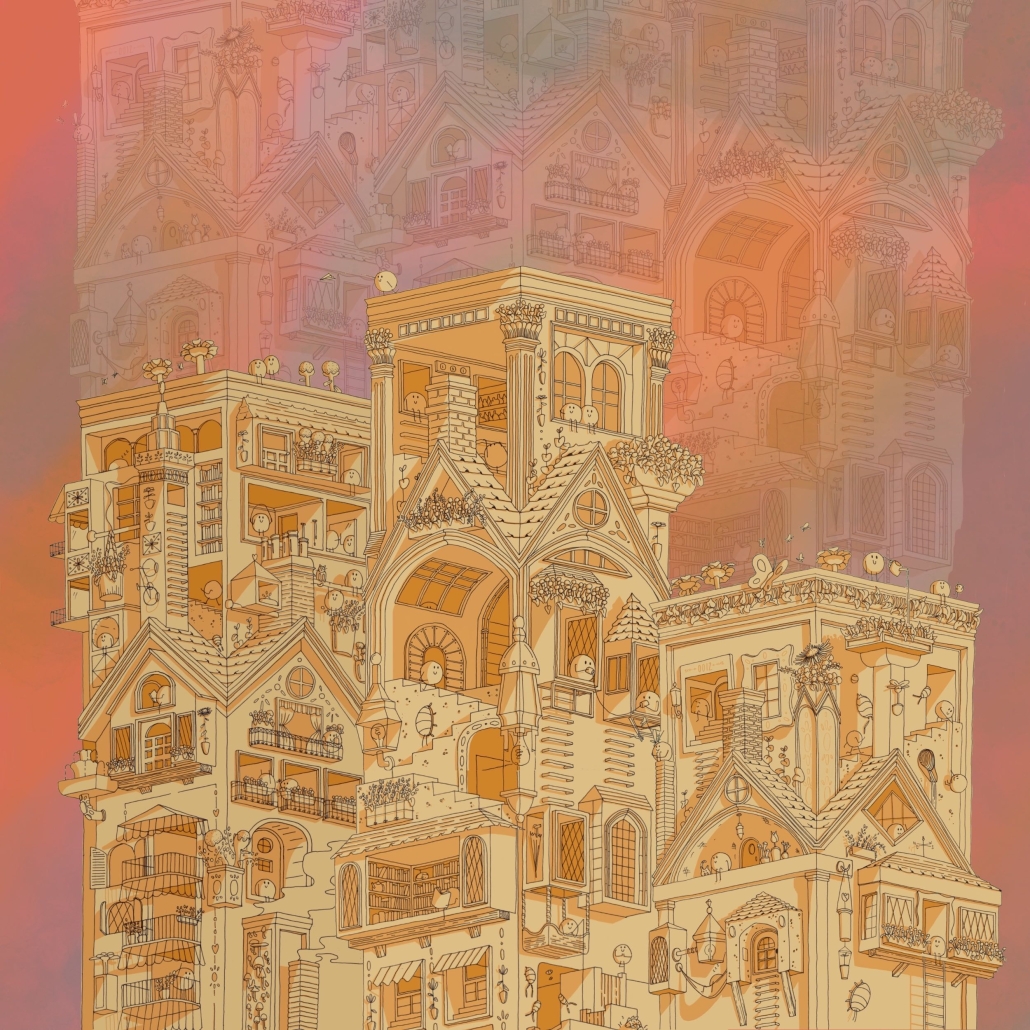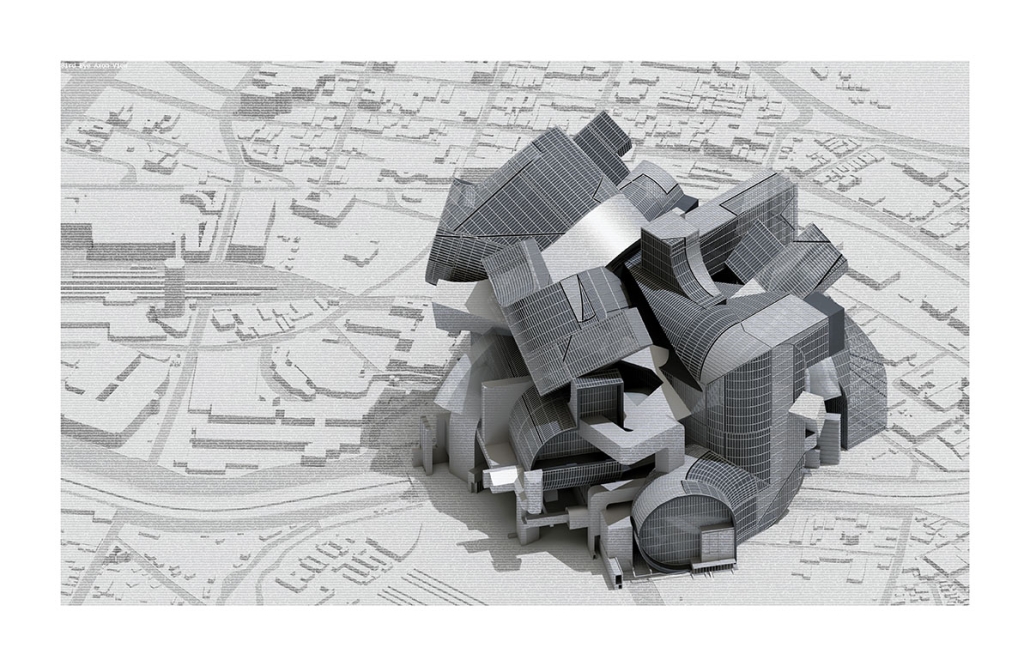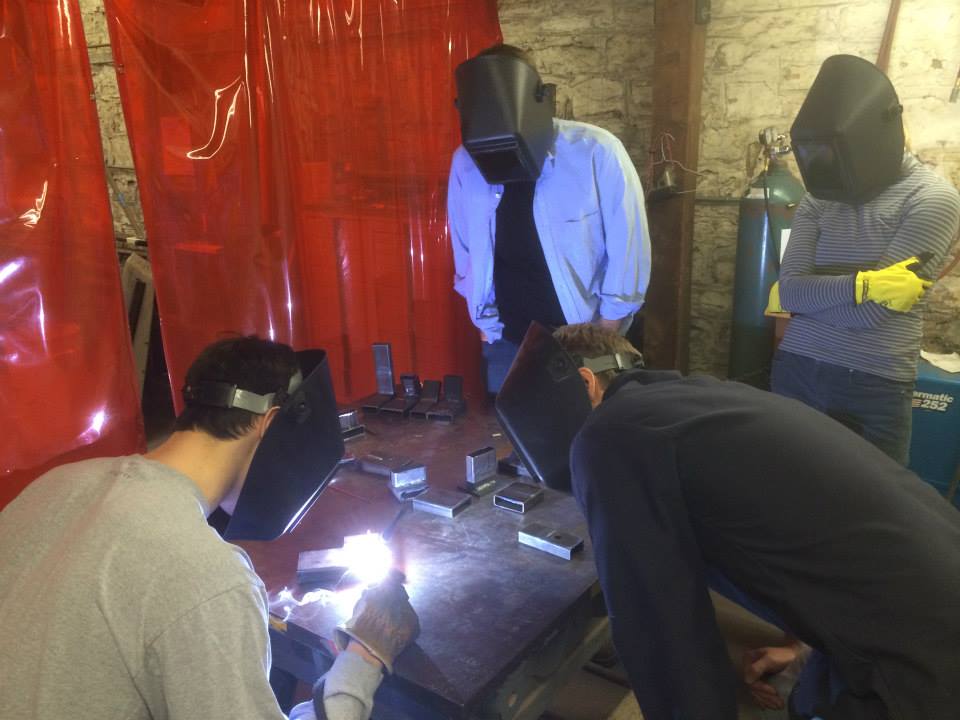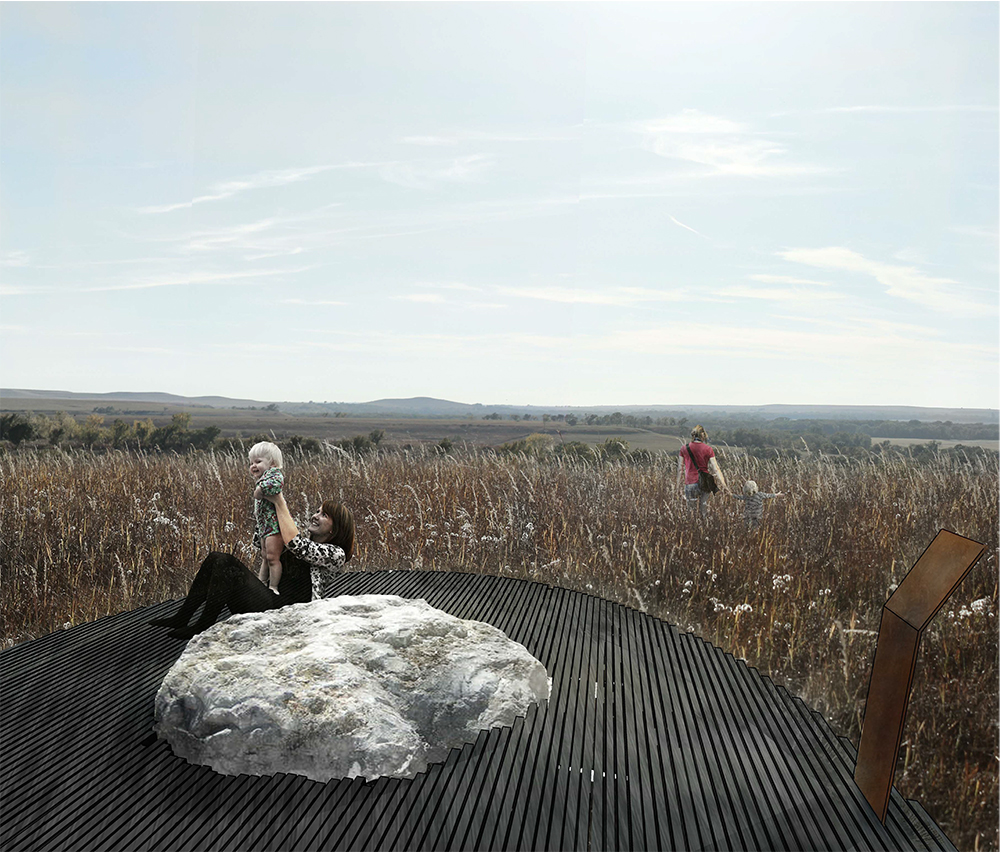Posts
Study Architecture Program Spotlight: Tulane University’s URBANbuild Program
As an architecture student, you have the opportunity to access various programs that will expand your skills and provide you with hands-on experience. At Tulane University, URBANbuild is an award-winning design-build program that allows students to gain firsthand experience building homes in their local community in New Orleans, Louisiana.
The program was founded in 2005, with plans to launch that fall semester. However, the city of New Orleans was devastated when Hurricane Katrina made landfall later that August. Hurricane Katrina was one of the deadliest and costliest hurricanes in U.S. history. According to URBANbuild’s website, “the city was left 80 percent damaged with the population immediately reduced to one-third.”
 (Image Credit: Tulane University)
(Image Credit: Tulane University)
“[Hurricane Katrina] really messed up our plans to start this new program, but more importantly and more rewardingly, it gave our program a new mission,” said Byron J. Mouton, Senior Professor of Practice at the Tulane University School of Architecture and Director of URBANbuild.
As New Orleans prioritized rebuilding, URBANBuild shifted its gears to not only assist in revitalizing the city but to also address New Orleans’ pre-Katrina problems including hesitancy to accept change. “When we first stepped into these communities, they were hesitant to buy into what we were doing,” said Mouton. “But then the second year came around and we returned and they were a little more receptive. And then it wasn’t really until we were there for three or four years that the community felt comfortable enough to engage with us.”
Community engagement and involvement is one of the most important qualities of URBANbuild. The program partners with local organizations including Bethlehem Lutheran Church, the Neighborhood Housing Services of New Orleans (NHS), and Urban Fabric. “We had to build that trust,” explained Mouton. “We also worked with an organization called Neighborhood Housing Services, which had been around before Katrina, and they specialized in helping people find ways to get homes. They were really the great connection between what we were doing as researchers and what the community needed.”
The URBANbuild program spans the fall and spring semesters, offering students the opportunity to engage in the home-building process from concept to construction. The fall semester focuses on planning and research. Participating students are tasked to investigate housing strategies, permitting regulations, drafting construction documents, the cultural fabric of the community, and other key considerations.
“[During the fall semester,] we get together with the students and we have a little in-studio competition. We identify our topic of research. They each develop a strategy, and then one is chosen. They select one at midterm, and then they work on the construction documents between midterm and the end of the semester,” explains Mouton.
Students get hands-on building experience as they begin the construction process during the spring semester. “We break ground in January of the spring semester and build the house by May,” Mouton continues.
(Image Credit: URBANbuild)
Over the span of 16 weeks, students learn construction techniques, communicate with tradespeople, and watch their project come to life. “[The students don’t come in with construction experience], but they do have the desire to learn and they work hard,” says Mouton. “And to be clear, they do everything except I have to hire an electrician, a plumber, and an air conditioning consultant installer. And then once in a while I’ll have a crew hang the sheetrock, but they do everything else.”
By the end of the semester, students are able to celebrate the product of their research, construction, and teamwork: a fully built home. Finished projects include tiny houses, single-family homes, duplexes, mixed-use facilities, and more.
According to UrbanBuild’s website, it’s during the spring semester that students develop strong bonds with the community’s residents. “Getting to work with NHS, I got to know the family [we worked with] very well, and I’ve been able to visit them years after,” shared URBANbuild alumna Karla Valdivia. “It’s great to get to know the family because you are creating something that really affects them. It has a very personal feel.”
Recently, URBANbuild garnered national attention when the program was featured on CBS News. Aired in October 2024, the segment highlighted 63-year-old Benjamin Henry moving into his new home, thanks to the work of Tulane students. In four months, the students transformed a vacant plot of land into Henry’s “forever home.” Formerly unhoused for over a decade, Henry shared his excitement for the new chapter and expressed his heartfelt thanks to the students. “Building someone’s forever home is crazy and so rewarding,” said Tulane graduate Elliot Slovis.
Graduates of the URBANbuild program have gone on to become licensed architects and designers. They credit the program for providing them with an in-depth understanding of the construction process and emphasizing the importance of community engagement. “[URBANbuild] gives you the real-life experience of what life is like after school,” shared Valdivia.
Design-build programs like URBANBuild are a great way to expand your skillsets and gain real-world experience before graduation. Visit the URBANBuild website to learn more about the program, browse the curriculum, and view finished projects.
Interested in learning more about Tulane University’s School of Architecture? Click here!
Questions about the URBANbuild program? Please contact Byron Mouton (bmouton@tulane.edu).
2023 Study Architecture Student Showcase - Part XXVIII
In Part XXVIII of the 2023 Study Architecture Student Showcase, each project focuses on the construction and architecture fields’ roles in climate change. The presented student theses and designs present a tangible solution to address climate change with proposals ranging from using materials including mass timber and “Hempbrick” to systematic changes such as incorporating decay into the designs and introducing sustainable product life cycles. Overall, the projects advocate for reducing waste to support long-term sustainable practices.
Reconstituting Rubble by Andrew Griffin, M.Arch ‘23
University at Buffalo | Advisors: Christopher Romano & Miguel Guitart
Five hundred and thirty-four million tons of construction and demolition debris are generated by the United States every year. This debris is anonymously moved away, invisible to most, to distant landfills far removed from its origin to lie dormant at the presumed end of its life. This demolition is a natural and necessary part of our current economic cycle, the permanence of the buildings we design is too often overstated. In a time when environmental issues plague the industry, simply discarding material is no longer a reasonable long-term option. Perhaps the scope of an architect’s involvement should extend into a building’s afterlife. Reconstituting Rubble proposes an adjustment to the material flow of building debris after demolition, advocating ways of transforming architectural rubble to develop building procedures that integrate waste-bound materials into new architecture. Drawing from new innovations and old technology, the project strives to lay out building end-of-life processes to divert would-be discarded material into new building assemblies.
This research looks at demolition rubble as a continuous stream of usable material in need of transformation. The proposed process steps involve demolishing, cataloging, refining, assembling, and reconstituting. The eventual result of this process examines the qualities of rubble, the roughness, the irregularity of its texture, shape and size. These are all traces of its past and show the immense effort it took to become reconfigured remains.
Instagram: @arc_andrewgriffin
Banished Into Existence: Agritecture at The Intersection of Architecture and Agriculture by Yan Ferris Konan, M.Arch & M.Red ‘23
University of Maryland, College Park | Advisor: Michael T. Ezban
Building operating emissions account for 28% of global greenhouse gas emissions while building components account for 11%. To mitigate these effects, we must reduce the carbon footprints of construction activities, building materials, and sequestering carbon dioxide in forests and farmland. Industrial hemp is a solution to all these challenges. Hemp is a carbon-negative crop, absorbing more carbon dioxide than trees, and thus represents a unique sequestration opportunity. By using hemp as a construction material, we can improve the thermal efficiency of our buildings, therefore reducing operational carbon. Finally, by substituting Hempbrick, a mixture of hemp and various binders, for more carbon-intensive materials, we can reduce the embodied carbon of the built environment. This thesis proposes a productive hemp landscape that will be open to the public as an agritourism destination. The project will raise public awareness about hemp cultivation as an agricultural opportunity and demonstrate the potential of hemp as a construction material, highlighting its multiple possible contributions to tackling the climate crisis.
The Intersection, located in Beltsville, Maryland, is a Productive Hybrid Hemp Farm with a visitor center, a manufacturing facility, a multipurpose Classroom, and office seating on two floors to serve as a demonstration and educational hub for Prince George’s County. This proposal aims to educate the public on the opportunities of this insulating material known as “Hempbrick.”
The site is divided into Three Parcels totaling 77 Acres. Parcel 1: Baltimore Avenue (15.5 Acres). Parcel 2: Baltimore Avenue (50 Acres). Parcel 3: Rhode Island Avenue (11.5 Acres). The Farm’s primary goal is cultivating and harvesting Hemp for industrial applications. There will also be a manufacturing facility where the hemp will be decorticated into bast and hurd fibers required to produce Hempbrick. In addition, there will be a Visitor Center where the public will learn about the benefits and processes of hemp. Tenants from The University of Maryland extensions have already expressed an interest in leasing office spaces to further their research on hemp and its advantages.
This project received The Architecture Thesis Award – 2023 University of Maryland, College Park
Forest to Framework by Eleanor Selzer, M.Arch ‘23
University of Southern California | Advisor: Sascha Delz
With the construction industry accounting for roughly 40% of all global carbon emissions, a clear and vast opportunity exists within the Architectural and Construction industry to enact real change in fighting the climate crisis. This change, as seen from a top-down perspective within the supply chain, could include material substitutions, technology innovation and implementation, and independence from non-renewable energy sources. These initiatives geared up in practice in recent years, but the industry is lagging behind if we are to make any real impact on our emissions and meet global climate goals.
The UN projects that there will be roughly 2.3 billion new urban dwellers by 2050. All of these new residents will require an enormous amount of infrastructure to sustain this influx, most importantly housing. Most low-to-medium-rise housing buildings are constructed using timber products, and so there is a profound opportunity to exploit this demand for new development as a means to mitigate the climate crisis and create a carbon sink within our cities.
When designers consider viable substitutions that are readily available, mass timber products are the top contenders. The opportunity to sequester carbon from the atmosphere while also providing a structurally sound, lightweight, and aesthetic material makes wood a clear solution for fighting climate change.
It is vital for timber products used in the construction industry to be sourced from sustainable-certified forest lands to ensure that deforestation of green reserves is mitigated and there is a guarantee of a true renewable resource. The existing supply chain, however, is not vertically integrated, and it follows the cradle-to-grave pipeline, where building materials will most likely end up in landfills following demolition. As a solution to climate impacts, the industry must introduce a closed-loop product life cycle system following the cradle-to-cradle ideology.
This sustainable wood products cycle requires all players across the supply chain to redefine how they purchase, distribute, design and use mass timber products. The main priorities within this sustainability product cycle are ensuring the increase in sustainable land management practices, growing the demand for sustainably harvested and produced mass timber products, updates to the building codes to mandate the use of these products and creation of deconstruction and reusable toolkits that can be adopted into standard design and construction practices.
This project seeks to re-frame the framework of sustainably harvested mass timber products and show how they can be utilized in design practices to maximize flexibility, incremental growth, reuse and adaptability. Specifically this framework is applied to an affordable housing cooperative model located in Venice Beach, Los Angeles, comprising of flexible and deconstructable mass timber modules.
This project received the USC Master of Architecture Social & Environmental Dimensions in Directed Design Research Award – In recognition of the most outstanding graduate final degree project exploring social, cultural, and environmental concerns.
Instagram: @ellie_selzer, @coop_urbanism
Heteromorph by Grégoire Gaudreault, M.Arch ‘23
University of Montreal | Advisor: Andrei Nejur
On a global scale, more than one billion people live in precarious housing situations, many construction materials are regularly sent to landfill sites or, worse, burned. However, these rejected materials represent a richness whose reallocation would lead to a significant economy of resources. Therefore, reusing materials from the construction industry could be part of the solution. This thesis project attempts to establish an architectural response to these challenges. Specifically, the proposed solution involves a constructive system for assembling temporary shelters using a diverse range of reclaimed and heterogeneous materials. The research focus of this thesis primarily revolves around utilizing digital technologies to discover new solutions to social and urban problems, while promoting the development of innovative construction methods that aim to reduce the environmental impact of architecture.
In a conventional architectural project, the materials used are directly linked to the envisioned form conceived during the design process and are typically integrated toward the end of the project. The proposed workflow seeks to invert this logic: reclaimed materials are used as inputs to imagine the shape of a shelter. Available resources dictate the morphology and composition of the projected form. More specifically, the proposed digital solution is based on an algorithm created using visual programming software, which enables the revalorization of materials recovered from waste in the construction industry. Any shape obtained through this method is composed of a configuration of 10 typical triangles, resulting from a combination of three specific edge lengths. These triangles can be constructed using either three linear elements or a single planar element, thereby expanding the range of possible materials. Low-tech metal nodes are utilized to connect these elements, facilitating the assembly and disassembly of the system. This flexibility allows for several variations or even partial or complete reconfiguration of the initial shape. In addition, the proposed system’s evolutive character encourages its components’ re-employment to limit its environmental impact.
This project received “Prix de l’Observatoire Ivanhoé Cambridge Nomination au Prix d’excellence pour étudiants Canadian Architect”
Instagram: @greg_g, @fac_ame_umontreal, @architecture.udem
An Architecture of Decay: Addressing Building Waste Through Biologically Integrated Architecture by Carson Stickney, M.Arch ‘23
Lawrence Technological University | Advisors: Scott Shall (Chair), Dan Faoro (Member) & Sara Codarin (Member)
There is a dissonance within architectural practice between buildings designed to be permanent, and the inevitability of building impermanence. This produces unusable waste at the end of a building’s life cycle. Materials are designed to become obsolete and replaced over time, leading to additional waste during a building’s inhabitance. Construction conventions value the low-cost consumption of resources such as concrete and metals over their effect on the environment (McDonough, Braungart, 2002). The current model of construction, maintenance, and demolition that most buildings go through ignores the resources and materials that are used and discarded, creating by-products that can never be used again by humans or the natural environment.
In order to align programmatic lifecycles with building creation and material decay, architects must incorporate decay in design, allowing building materials to continuously support human and biological use when a building is abandoned or demolished (figure 0.1). All buildings must die, but their material by-products do not need to be wasted. Incorporating decay is an opportunity for the future growth of architectural spaces and realigns the buildings that we make with the natural cycles that affect them. Therefore, to explore this potential, and minimize the waste associated with a building’s decay or demolition, architects need to design buildings and urban landscapes with the eventual decay of products in mind, to eliminate wasted resources, and reinforce the existing natural cycles impacting our work.
To investigate this claim, this project will design a 2-story mixed-use structure, using fully biodegradable materials. This development type has a legacy in architectural practice and is a staple construction type of most major U.S. cities. It also acts as an advantageous operating system relative to this thesis due to its cyclical resiliency to programmatic cycles, and its need for continual replacement and maintenance of materials. This investigation is intended to relink human spaces with natural ones, fostering the perpetual growth and balance of both systems with each other.
Instagram: @cstickney02, @scott_shall
Passing Permanence: Reversible Building Practices in the U.S. by Aaron Baldwin, M.Arch ‘23
Lawrence Technological University | Advisors: Scott Shall, M.Arch/RA, Sara Cordarin, Ph.D & Daniel Faoro March/UD, RA
The construction and demolition industries generate abhorrent amounts of waste through the inefficient generation and unplanned removal of permanently intentioned buildings that cannot last forever. Current strategies of material construction often consume, permanently alter or degrade materials being used, resulting in the inability to wholly reuse valuable building components. As a result, existing unused structures will often become waste, or require resource-intensive recycling or remanufacturing to salvage portions of material (USEPA 2018).
Buildings are not permanent. The current lack of life-cycle design and expectation for buildings to last indefinitely leads to a loss of “technical nutrient” potential (Braungart 2002). The reduction of waste, the continued reuse of materials and designing for component longevity can achieve a fundamental level of sustainability, as the concept of waste is antithetical to the ability to maintain a process over time. To recapture the potential of a building and remove the ecologically harmful effects of permanence that occur after the building is no longer needed, the production, construction, use and demolition of architecture should ‘leave minimal trace’ on its building materials and site.
A current lack of reversible and circular practice in the U.S. exists due to many existing social, cultural and economic factors. The focus on tradition, risk aversion and bountiful space for new development allows the country to remain stagnant and reliant on existing building methodologies without the push for change. Initial reversible architecture located in the U.S. will not be made out of newly developed components, but primarily of existing standardized materials joined in newly reversible methods.
Architecture should not be destructive. An architecture that leaves minimal trace does not have to employ highly engineered componentry and new modular solutions that restrict design outcomes but rather can modify existing techniques and tectonic understandings to remove wasteful practices that intentionally degrade or destroy material resources. Minimal trace architecture simultaneously upholds the health of its materiality through the redefinition of connection types while supporting its site and larger context through the removal of systemic inefficiencies and unnecessary permanently intended change.
See you in the next installment of the Student Showcase!
2023 Study Architecture Student Showcase - Part XX
Part XX of the Study Architecture Student Showcase features projects that use timber and concrete as central materials in their designs. The displayed work highlights timber as an element that can promote sustainability and increase construction speed. Concrete is also featured – as a medium that invites fluidity and innovative building design. Join us in exploring these outstanding projects!
Poydras Office Proposal for New Orleans by Brianna G. Baldwin, M.Arch ‘23
Tulane University | Advisor: Ruben Garcia-Rubio
This proposal for an office building on Poydras St. focused on three main concepts for the design. The first design concept is to create cascading views through double-height spaces from the ground floor to the 5th floor. The second is to organize the core programmatic elements of common spaces, building services, and specialized programs such as retail, gallery, office, and library. The cascading views are all located within those specialized programmatic areas to enhance the connections between users. The third concept is to veil and protect the office building with aluminum panels that wrap around the building. The panels have strategic openings allowing for increased access to natural light and the wrapping façade adds depth for a visually refreshing façade.
Additional design concepts that were crucial to the project were the use of sustainable strategies. Timber construction was chosen based on its sustainability as a material, the increased speed of construction due to the higher amount of pre-fabrication, and the enhanced user experience within the exposed wooden structure. Solar panels are used on the southern façade for solar energy harvesting and water is collected through all exterior spaces including the plaza. The proposal includes two exterior access points: a large public southern terrace on the 4th floor and a more intimate northern balcony on the 5th floor along Poydras St.
This project was featured in the 2023 Metropolis Future100
Instagram: @rubgarrub, @bribaldwinn
Solar Grid, a Net-Zero Energy Housing Development by Aidan Kurtz, B.S. Architectural Studies ‘23
University of Missouri | Advisor: Lyria Bartlett
Solar Grid is a low-income multi-family housing development in the heart of downtown Columbia, MO. The building addresses the low availability of affordable housing for young, impoverished individuals while providing occupants with abundant resources to improve their quality of life and wellness. A majority of those in need of affordable housing in Columbia exist within a half-mile radius of the site, so tenants are still connected to their neighborhood. The site is shared by the Columbia Armory, a resilient re-purposed National Guard base, which now serves as a recreation center, bicycle co-op, and emergency shelter, offering occupants amenities without increasing the building footprint.
The use of a mass-timber structure is net-positive and sequesters carbon during its life-cycle, while the expedited construction time reduces the use of machinery that pumps carbon into the atmosphere. Using biophilic design, the exposed mass-timber elements that line the interior improve the occupants’ sense of well-being. Materials were selected in consideration of their low VOC emissions to improve overall air quality. Daylighting, quality appliances, and fixtures improve day-to-day living. An air-tight envelope design with highly insulated walls improves the thermal and humidity comfort levels of individual units and spaces. Advanced HVAC systems ensure that quality air is being circulated through the building with minimal loss of energy. The combination of active and passive strategies generates an EUI of 27.89 kBtu/ft2/yr without photovoltaics and -3.87 kBtu/ft2/yr with on-site photovoltaic energy generation.
This project won the ARCC King Medal.
Instagram: @mu.archst
Tailoring Concrete: The Production of Multi-Material Suits for Concrete Construction by Damian Majkrzak, M.Arch ‘23
University at Buffalo | Advisors: Christopher Romano & Nicholas Bruscia
This thesis traces the rich lineage of fabric formwork in concrete construction, exploring its potential to create expressive architectural forms. Through iterative prototyping, the production of multi-material suits, along with a deep understanding of material behavior, this research aims to surpass the limitations of conventional construction technologies and promote architectural innovation. By tracing the historical evolution of fabric formwork, knowledge is accrued from the lineage of various architects, artists, and sculptors who have developed true material expression. These authors serve as a foundation for pushing the boundaries of material expression and form. The iterative prototyping methodology allows for the experimentation of construction techniques that result in expressive architectural forms, while the production of multi-material suits provides a platform for creative exploration.
By examining material behavior, the interplay between textiles and wet concrete is revealed, highlighting the relationship that enhances the energy and fluid nature of concrete that produces soft and bulbous forms. More specifically, the research puts an emphasis on crafting innovation and integrating technical precision with creative expression. By embracing the craftsmanship deeply rooted in fabric formwork, the construction process becomes an art form, nurturing a connection between the built environment and its inhabitants. In conclusion, this comprehensive exploration of fabric formwork in concrete construction contributes to the advancement of this medium as a means to create expressive and visually striking architecture, offering new possibilities and inspiring the future of architectural design.
Instagram: @damian.arch
Metamorphic Insertion by Maud Indiana Vikjord, M.Arch ‘23
Academy of Art University | Advisor: Mark Mueckenheim
The Fisherman’s Wharf once held a special place in the heart of local residents and visitors to San Francisco as a fish market at the coastal edge of the city, now it has a reputation as a tourist destination and is often rejected by local residents. During the global Covid-19 pandemic, travel restrictions left the area as a virtual ghost town with many closed doors.
This project for a public bathhouse, with a spa, catering, and restaurants adds a building of architectural significance to the mix of “tourist trap” architecture prevalent in this area. The building, which occupies an entire urban block, is based on a continuous surface of concave and convex spaces, inspired by the spatial and tectonic quality of an egg crate, and on circular components made out of thirty different prefabricated concrete elements.
The upper floor houses the bath, while the lower floor is inhabited by public restaurants, a spa surrounding a lush courtyard, and the changing and service areas of the bath. The geometric simplicity and limited prefab elements achieve a surprisingly high spatial complexity and quality.
This thesis aims to create a space that reactivates the area by encouraging local engagement, while still contributing to the experience of the tourist. The project aims to bridge the gap between the two in a curated cultural bathhouse experience and an assortment of local catering businesses. The quality of the architecture aims to elevate the current context in San Francisco’s Fisherman’s Wharf to encourage more sustainable long-term development and evolve this place into an area providing better experiences for tourists and locals alike.
This project won the Spring Show Prize for Best Thesis.
Instagram: @aauschoolofarchitecture
See you next week for the next installment of the Student Showcase!
2023 Study Architecture Student Showcase - Part XIV
Welcome to Part XIV of the Study Architecture Student Showcase! Today, we take a look at projects that use architecture as an avenue to convey philosophy and storytelling. Inspiration for these pieces ranges from renowned filmmakers and unfinished architectural projects to the study of fluids and memory as a sense of home.
We hope you enjoy this collection of student work and come back next week for a new installment.
A Machine for Living: Re-Provoking the Slow House in Contemporaneity by Russell Harman, B.Arch ‘23
Syracuse University| Advisors: Iman Fayyad, Kyle Miller, and Edgar Rodriguez
A Machine for Living is a thesis that aims to re-provoke Diller + Scofidio’s “Slow House within Contemporaneity.”
The project began in 1989, but construction stopped shortly after breaking ground due to the client’s own financial limitations. The project took on a new life through its representation when it later debuted for a lecture at Columbia in 1991, which ultimately led to its success and acclimation.
The site still remains undeveloped, and for the argument of this thesis, the palimpsest of the original construction still exists on the site, making it readily available for a new provocation of what the home could be.
Similar to the ways that OMA’s exhibition of “La Casa Palestra” offered new readings of the Barcelona Pavilion, this thesis aims to be a contemporary counterpart to the original Slow House.
The plan of the Slow House follows two curves and moves the occupant from the automobile to the view as seen in the picture window juxtaposed to the television screen. It is simply “a means to an end.”
Deforming the original plan changes the relationship between the occupant and the home.
A number of possible homes and narratives emerge through iterating the parameters of the home, making the design of Diller + Scofidio one of many that could be derived.
The ultimate one (the provocation of this thesis) becomes enveloped in itself so that the occupants are confronted with being trapped in the cycle of their inhabitance, longing for an escape. It becomes “a means with no end,” or “a means to an end that never ends.”
The home becomes a composite of its history. And the home itself offers the potential for multiplicity in experiences or a non-singular narrative.
The two homes thus engage in conversation with one another. This provocation of the Slow House in 2023 is in many ways both a commentary and critique of that from 1991. Their engagement with one another becomes amplified in understanding contemporary domesticity. Through their comparison, the two designs re-invigorate the potential for what the home could be on this vacant site, both in the past and in the present.
This thesis project won the Syracuse University School of Architecture 2023 James A. Britton Memorial Awards Citation for Excellence in Thesis Design.
Instagram: @rjharman_, @i.fayyad, @projectif.space, @kylejamesmiller, @edgararl
Atlas of Memory: The Representation of the Invisible in Architectural Drawings through Generative Coding by Julia A. Lopez, M. Arch ‘23
Arizona State University | Advisor: Elena Rocchi
Architecture serves as a medium through which our worldview and memories find expression, capable of evoking emotions, silence, and discovery. Within architectural spaces, memory acts as a guiding reference, enriching our understanding of spatial awareness. Inspired by Giuliana Bruno’s “Atlas of Emotion,” Julia Lopez embarked on a transformative journey for her capstone project, seeking to discover her own personal narrative and construct an atlas of memories through the exploration of composition and connections. This endeavor aimed to transcend the limitations of language and discover a visual language of emotions and images that could bridge the gap between people and their invisible memories and dreams, ultimately breaking down barriers.
The research question focused on understanding how to represent the invisible realm and manifest hidden memories and dreams using storytelling, sketches, AutoCAD drawings, and generative coding.
The project began with a comprehensive study of Andrei Tarkovsky, a renowned filmmaker fascinated by the representation of the unseen and the intangible, imparting a distinct presence that shaped the poetic and spiritual essence of memories. Through an analysis of Tarkovsky’s work, the student observed his skill in using light and shadow to evoke stillness and hint at dimensions beyond the visible world of memories. She also discovered his ability to bring attention to imperceptible elements, such as the movement of objects, effectively conveying the distortions of dreams. Building upon her architectural perspective, the project unfolded in two phases, with drawing serving as the core methodology.
In Phase 1, the student explored how to incorporate architecture and the invisibility of memories through storytelling, aiming to forge a new language within the field. Phase 2 delved into advancing architectural representation through generative coding. Leveraging the p5.js script library and TouchDesigner, she created interactive visuals based on narratives, expanding spatial representation through data points. This innovative approach made the invisible visible, enhancing the representation of memories.
Throughout the process, the capstone project took a personal turn as the student documented her grandmother’s life transition and the various states of consciousness she experienced. Considering this as an authentic experiment, she observed her grandmother’s moments of hallucination and integrated her own drawings into the coding program. This generated data points representing her grandmother’s memories, including those recorded during her unconscious moments. By incorporating these sketches, the student aimed to transform them into tangible forms, capturing invisible memories and bringing them to life through drawings and a 5-minute movie.
This project won the TDS Design Excellence Award.
Novel Natures Within Itself by Cherie Wan and Changzhe Xu, M. Arch ‘23
University of Pennsylvania | Advisor: Simon Kim
There is an architecture that travels within Los Angeles. The building has two states: it collects and it curates. The homunculus’ emergence in the landscape of Los Angeles’ urban fabric began its role as a collector. As it traverses across disparate environments, it collects human waste materials that make up its own body and functioning system. The body is an incubator for a new world. As it accumulates material, new hybrid environments are created until it no longer has the capacity for it. When it reaches this state of death, it deposits new hybrid environments where novel natures are ultimately curated. This cycle repeats itself for as long as civilization persists. Through the lens of homunculi, we are reminded that we must find new, critical ways to reflect on the architecture and monuments we have inherited and to imagine those we have yet to build.
This project was featured in the Fall 2022 Pressing Matters Publication.
Instagram: @cherie.arch, @changzhexu
Fluid Motives: Experimental Connections by Sterling Jones, M.Arch ‘23
University of Idaho | Advisor: Hala Baraka
The study of fluids in motion reveals the open-ended process of becoming, ranging in size from astronomical to atomic. The understanding and depiction of fluids has intrigued many artists and scientists, but its pivotal beginnings belong to Leonardo da Vinci, who documented the foundations of many now-accepted theories and principles centuries before their societal realization. Da Vinci’s methods of thinking, experimenting, and drawing embody a dynamic process of work integral to architecture and visual communication, and it may be his study of fluids that aided in his inventions and was responsible for his underlying genius. Fluid’s natural lack of a boundary creates connections between surfaces, disciplines, and thinking, as well as a framework that relies on other components and interfaces for it to be understood. The study of fluids’ influence on architecture is pinnacle and unrealized as architecture deals often with conceiving a whole made up of many constituent parts.
Architecture is the convergent reality of divergent design explorations and relies on innovation and the radical repurposing of technology, taking the idea, concept, tool, or method from one intended purpose and using it to address another. “The essential nature of matter lies not in objects but in connections,” and fluid not only generates through transformation and reaction, but also destroys through breakdown and decay. Applying a system of understanding to fluids underlines conceptual frameworks for problem-solving and solution-adapting in both design and operation. A number of fluid experiments and graphic mediums are explored to better understand, visualize, and realize fluid studies’ architectural applications.
This project won the King Medal’s Award.
Instagram: @Sterlingstratfordjones, @Halahb
Composing Persona by Francesca Picard, M.Arch ‘23
University of Southern California | Advisor: Ryan Tyler Martinez
In this thesis, architecture is explored through the lens of persona. What if buildings are just as much of characters in the built environment as the people who occupy them?
This study will explore two main determinants of a building’s persona; form and materiality. The form is seen as the body of a building; its frame, posture, and overall presence. Just as we define characters by their physique, buildings are characterized by their form. Materiality offers another layer of characterization to buildings, through properties of patterns, colors, and textures. Analogous to a character’s wardrobe, materiality defines persona in architecture through ensemble. Together, form and materiality are the elements that propose the tone and character of buildings, not only to people but to their surrounding environment. What happens when these characters interact? How do their personalities communicate with one another?
Intertextuality refers to the idea that every text is in dialogue with other texts, which provides a dynamic, shifting context of meaning. This study aims to investigate the intertextuality of architecture, with a focus on persona. With collage as a way of working and a nod to the exploration of intertextuality, compositions of both form and materiality will be created. These resulting personas will be asked to interact with each other, just as the buildings architects design are asked to speak to their surrounding contexts. Through this exploration, a dialogue on persona in architecture will develop.
This thesis project won the USC Master of Architecture Disciplinary Advancement in Directed Design Research Award – In recognition of the most outstanding graduate final degree project illustrating a critical position that advances the discourse of the architectural discipline.
Instagram: @francescapicard, @ryantylermartinez
Magic of the Real by Nickolas Witt, B.Arch ‘23
University of Arizona | Advisors: Christopher Domin (studio coordinator), Laura Hollengreen, and Jesus Robles
STUDIO PEDAGOGY
This research cluster seeks to enhance our understanding of light scientifically, technically, and culturally so that we conceive of it as more than that which reveals the “masterly, correct and magnificent play of masses.” It is also something that has physiological, psychological, and affective impacts on us while operating within a dynamic environmental economy of atmospheric and energy conditions. At the same time, the light that accompanies heat can be searing, increasing water evaporation, desertification, urban heat island effects, and other deleterious environmental effects. The ethical and humanistic dilemmas this causes and the inequitable distribution of impacts across countries and populations are pressing issues to be addressed by designers and policymakers.
THE EXPERIENCE OF ARCHITECTURAL ATMOSPHERE (project narrative)
In architectural design, “atmosphere” refers to the overall sensory and emotional experience created by a building or space. It encompasses a range of factors such as lighting, materiality, color, texture, scale, and sound, which all work together to create a particular mood or ambiance.
Atmosphere is a critical consideration in architectural design, as it can significantly influence how people experience and interact with a space. For example, a space with warm lighting, soft textures, and natural materials may create an inviting atmosphere, while a space with bright lighting, hard surfaces, and artificial materials may feel more sterile and clinical. Architects often employ atmospheric design strategies to create specific emotional responses in people who use or visit a space. This can include using materials and colors that evoke a certain feeling or controlling the amount and quality of light to create a particular mood. Overall, atmosphere is an important element of architectural design, as it can greatly impact how people perceive and interact with a space. By carefully considering the atmospheric qualities of a building or space, architects can create environments that are both functional and emotionally engaging. As we design for the present, and the future, we must consider the atmospheres of space and architecture’s lasting impact.
This project received the University of Arizona: School of Architecture Capstone Award and the Rick Joy Award: The Generous Mind.
House(s) of Tethered Fragments, a Consideration of Embodied Images for Memories and Daydreams by Ashley Skidmore, M.Arch. ‘23
The University of Texas at Austin | Advisors: Professor Elizabeth Danze and Professor Kevin Alter
This thesis is a phenomenological and poetic exploration of the relationship between memory and place as it relates to a sense of home. My interpretation of this relationship assumes that memory is held by both the human inhabitant and architecture itself. The former is more straightforward and has been well-trodden by phenomenological writers such as Juhani Pallasmaa and Peter Zumthor, and captured in the paintings of Andrew Wyeth.
This project is derived not only from an interest in exploring the different impetuses for memory but is also a study of the archetypal images of space carried in the collective unconscious, and how those images drive humans to embody and inhabit a place. These archetypal notions – primordial, fundamental, and deep-seeded – imbue spaces with preconceived, self-evident meaning. By incorporating these interpretations into the design of a house, I am emphasizing the role that home has as a character in the story of a life, and a generator of memory.
From Jung’s “Man and His Symbols and Bachelard’s Poetics of Space,” I have derived nine archetypal spaces or elements embedded in the home: thresholds, doors, passageways, stairs, cellars/attics, hearths, water basins, nests, and niches. These spaces are consequently frameworks through which to consider how people inhabit their homes through the body – musing on what moments, artifacts, and spaces they attach themselves to. This approach is formed through a deep reading and sympathy for the imagined resident. By deriving spatial images from archetypal notions in the stage-set of a home, it will reveal how impulses for inhabitation are simultaneously individual and more collective. Through this lens, my question is: How can a home be designed to augment these interactions, and cultivate memory, daydreams, and meaning?
My project is an approach to designing a house by creating a series of vignettes that explore and encourage the embodiment of the identified archetypal spaces. These vignettes are tethered together, or ordered, by the application of specific site constraints. The intention is to suggest that the desires of each room, and the relationships therein, precede any contrived diagram or ordering principle.
St. Vitus Reimagined by Izzy Brehm, M.Arch. ‘23
University of Nebraska–Lincoln | Advisor: Zeb Lund
This project reimagines a small, architectural detail as an occupied landscape for small creatures. It is an exploration of process and an attempt to reimagine how we design space. Depicted in this drawing is a species of small creatures, who have evolved to occupy a man-made column and manipulate it to fit their needs. Taking advantage of the column’s verticality, they have evolved to climb rather precarious surfaces, carve space into stone, anchor into flat facades, employ vertical farming, and cohabitate with bugs and insects. The form of the drawing was inspired by a gothic column at St. Vitus’s Cathedral.
Bigness by Fangshuo Zhao, M.Arch. ‘23
University of Southern California | Advisor: Ryan Tyler Martinez
The one ending of Modernism is Heroism. This should be a dead end with no further believers.
Only if the prosperity and miracle of growth are shut by the miserable reality. Based on the background that social democracy/democratic socialism is losing the battle to Populism and Neoliberalism.
And then, the plague, the unrest, the witch hunt, the populism, the Strongman, the totalism, the authoritarianism, the anarchism, ……
This is the history, but also the actuality.
Heroism as a manifesto and a paradigm evolving from modernism, is being consumed and evolved into a new mutation/variation: Post-Heroism.
My thesis starting point is not the Heroism Architecture in the past, but the relationship between the old and new heroism, and how this changing relationship could lead to a new form. It is a form that accommodates the mix of force and the cluster of programs.
The two points that define post-heroism are “bigness” and “public Thermae model”. I think “bigness” is becoming more important, especially in this virtual and AI period. Inside the bigness, there will be a magnet to make people get closer, and will be possible to contain more programs, activities, and problems physically. More civic, living, leisure, and culture programs will serve as a modern Thermae, a modern public bath. And Post-Heroism will be the formalism index or paradigm of it.
This project received the USC Master of Architecture Excellence in Directed Design Research Award – In recognition of the most overall outstanding graduate final degree project
Instagram: @adamzfs, @ryantylermartinez
Monster Generator by Rose Vito, M.Arch. ‘23
Lawrence Technological University | Advisor: Masataka Yoshikawa
This project started off with a few questions to ponder – do you dream about waves? And do you know what meanings embed your nightmares?
This project began with the cabinet of curiosities. Because of the qualitative nature of this interest, rather than put together a cabinet, I collected objects that had the specific geometries that I could use to tell a story, and the “cabinet” almost immediately took the form of a sculptural representation of human emotions impacted by dreams, which then morphed into what I am calling the Monster Generator.
The background research that went into this work came from the fields of psychology, literature, mythology, and seismology. Literary characters such as Dracula, Frankenstein, and Jekyll and Hyde were developed based on the author’s nightmares.
As you will see soon, The central images generated were inspired both by these literary works as well as some of my own nightmares. How do they make you feel?
The components of the monster generator are the good which represents the adrenaline of the dreamer which powers the generator. The goo powers the machine and turns the propellers that process the ingredients.
The ingredients include structures that represent proteins, vitamins and minerals, cages for animals, and nets that have captured bugs. I thought it was fun to show the bugs escaping and to pose the question – what happens when the bugs escape?
As the person dreams their adrenaline (goo) displaces the parts of the machine. The seismograph-like structure measures the level of adrenaline and translates the memories, experiences, hopes, and desires into the dream catcher.
Dream catchers catch the bad dreams as they are translated through the fins. The machine struggles to keep up with the constant influx of memories and is in a constant state of regeneration as the dream catchers are used and broken down. As the machine regenerates it evolves and the antiquated seismograph system begins to be replaced with the more modern accelerometer system. This evolution is causing inconsistencies in generator functionality. The system malfunctions and the monsters constructed in the Central Images are more than only alive in dreams.
The Central Images are released from the dream catcher. These elements create the emotional center of the dream or, what is called in psychology, the Central Image – is the “best-remembered” and “most powerful” part of the dream. If we are frightened by our memory of the qualities of the Central Image we label it a nightmare. The Central Images are meant to spark your imagination. The scariest monsters are the ones in our own minds.
Instagram: @ltu_coad
See you next week for the next installment of the Student Showcase!
Kansas State Students Design+Make with El Dorado
Are you looking for hands-on building experience while you are studying architecture? These 5th year Kansas State University Students partnered with local architecture firm (El Dorado) as part of the Design+Make Studio! Read more about the partnership below!
(via el dorado blog)
Since el dorado opened it’s doors in 1996, we have been exploring the relationship between designing and making as a design studio. For us, the shop continues to play an important role in the creation of well-crafted architectural spaces—but it also is critical as a tool to prototype ideas and explore materials and connections. Designing and making are truly linked.
This is the fifth year of the Design+Make studio at K-State. The studio is an academic partnership between Kansas State University’s 5th year capstone architecture design studios and el dorado. Students follow a four step process, experiencing the challenges of seeing their projects come to fruition in a real-world setting: understanding, envisioning, documenting and making. As a studio, Design+Make provides students with a lens into the entire process of a project becoming a reality, from concept to construction to finished product.
The studio intentionally takes on a manageably scaled project to allow the students to complete defined tasks within two semesters. During this time, students learn valuable communication skills by having to present iterative design developments to actual clients, consultants and craftspeople. They also learn to navigate complex authorship issues with a project and process that intentionally deflates the notion of a single creator. Perhaps the most significant contribution to the students’ learning experience is connecting the abstraction of drawing, physical and virtual modeling with the constructive processes required to translate ideas into tangible form — moving students from thinking about abstract ideas to creating actual constructed forms.
In early January, the Association of Collegiate Schools of Architecture awarded Kansas State University’s Design+Make Studio project Camp Daisy Hindman an award in the Design Build category. Each year, ACSA honors architectural educators for exemplary work in areas such as building design, community collaborations, scholarship, and service. According to the ACSA, award winners “inspire and challenge students, contribute to the profession’s knowledge base, and extend their work beyond the borders of academy into practice and the public sector.”
The studio also was recently awarded the Kremer Prize, an award that recognizes excellence in collaborative design for students in their final year at Kansas State University, for their work this year on the Preston Outdoor Education Center. For the past nine months, the Design+Make studio has been working on the Preston Outdoor Education Station at YMCA’s Camp Wood in the Flint Hills in Kansas.
The project was originally proposed as a single shade pavilion that would serve as a gathering space to educate visitors and campers about the surrounding grasslands. The students took the original program and ambitiously expanded its scope to include multiple education stations that each tell a story about the prairie by incorporating materials that highlight different features of the surrounding landscape. The stations are connected by a pathway featuring a 300 linear foot dry stack limestone wall.
The Preston Outdoor Education Center thoughtfully integrates the natural layout of the landscape into the overall design intent by building into and around an existing ridge, maintaining a low visual profile, and sourcing materials from on site. “As architects, we are taught throughout our schooling to conduct in-depth site analyses that dig deep into the essence of place and can reveal aspects and opportunities for a design,” said Phil Macaluso, one of 13 students that were part of the project. “Through the process of designing with a conscious awareness of a place, an architectural work can also benefit sustainability practices, conservation efforts, and create beautiful, spiritual places.”
Not only did the students thoughtfully design their project, but the ambition of scope and dedication of time and effort in the hands-on “making” process were truly impressive. Students involved in this years Design+Make studio included: Torrence Campbell, Tamra Collins, Luke Custer, AJ Henry, Brent Higgins, Daniel Johnson, Phil Macaluso, Alex Martinez, Kelsey Middelkamp, Jake Rose, Brianna Reece, Sevrin Scarcelli and Blake Toews.
(Read more via el dorado blog)
—
Interested in the Kansas State University Program? Check out their profile page on StudyArchitecture.com!
















